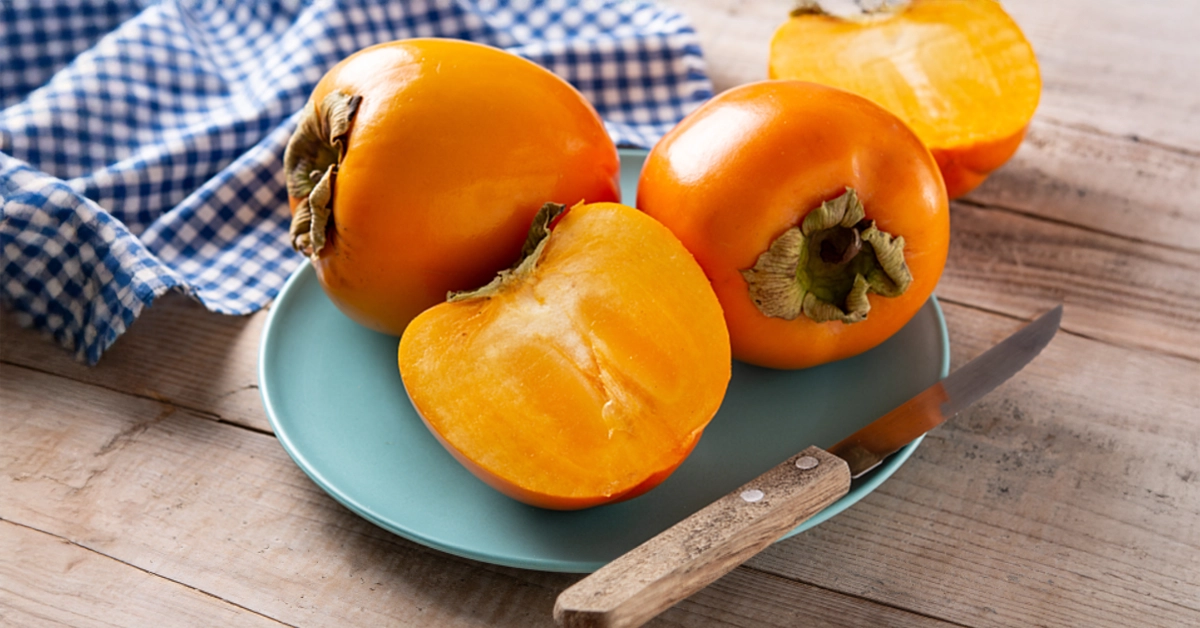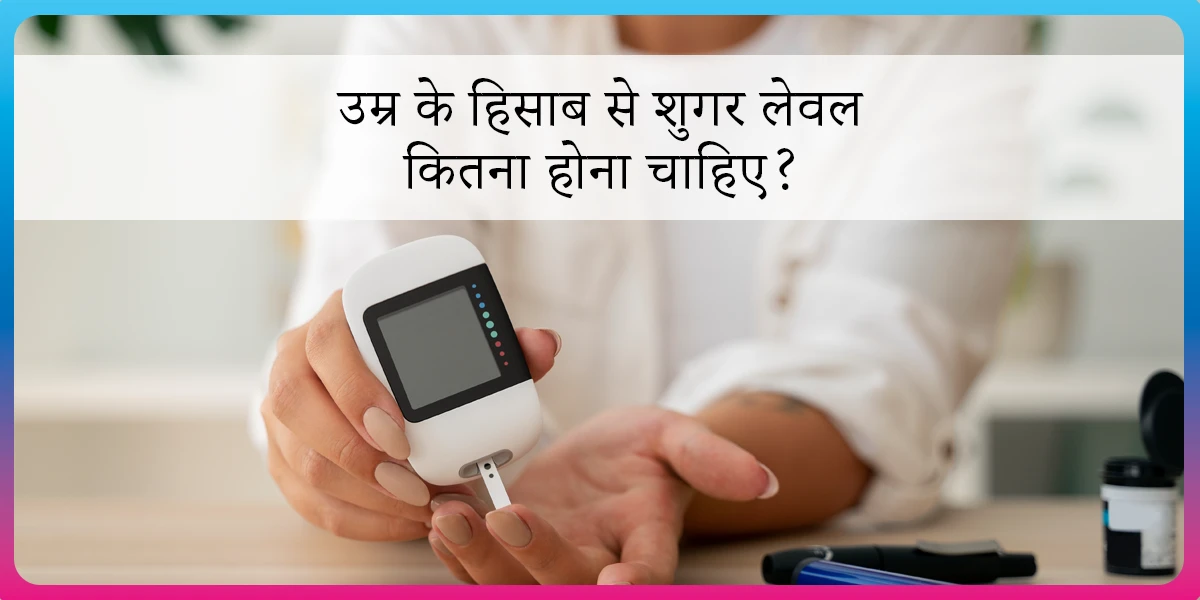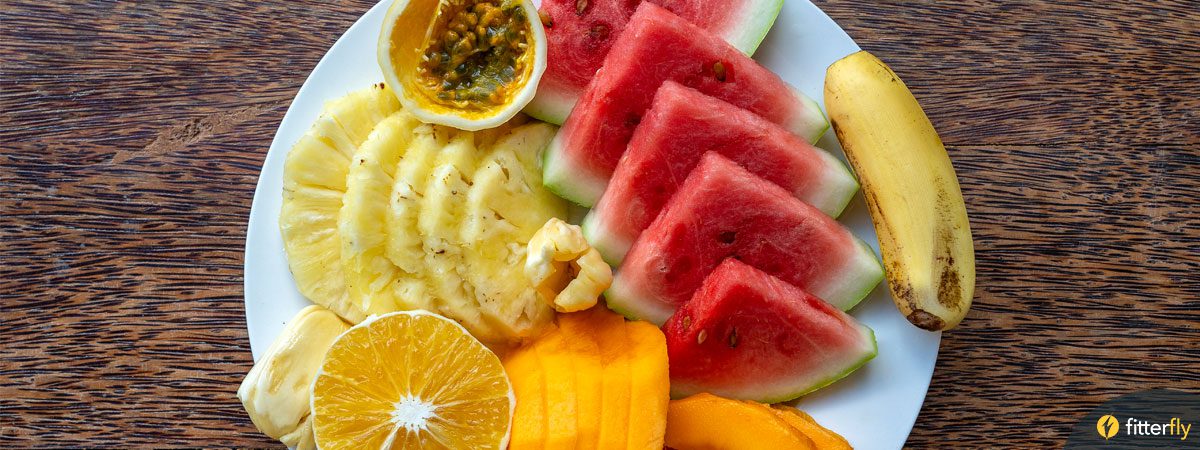Is Amarphal (Persimmon) Good for People with Diabetes?

With the monsoons long gone, the most pleasant time of the year is here! The days are cooler, the nights are blissfully pleasant, and your local bazaar and bhaji markets must be filled with seasonal produce.
Among the treasures you’ll find right now is the bright and beautiful Amarphal, or Persimmon. Also known as Japaniphal Uttar Pradesh, Amlok in Assam, Lukum in Manipur, and Seemai Panichai in Tamilnadu.
Ever spotted those deep orange fruits that look a bit like tomatoes with a quirky flat hat? That’s Amarphal for you (or “Simran”, as our local fruit vendors in Mumbai call it 🤭).
Amarphal, meaning “immortal fruit,” are unique because they continue to ripen even after being picked.
The name itself feels like a slice of Indian mythology, right? In fact, there’s an old story about King Bharathhari, who received a persimmon as a royal gift. Through a series of events, this fruit uncovered a chain of betrayals that led him to renounce his throne and pursue a life of asceticism.
From its intriguing history to its versatility, Amarphal has so much to offer. Let’s understand why this fruit deserves a spot in your kitchen!
What Makes Amarphal Special?
If you’re trying persimmons for the first time, there are a few things you need to know. There are two main types of persimmons: astringent and non-astringent.
- Astringent Persimmon: Examples are Hachiya and Honan. similar to a bael fruit (wood apple). Before you eat, these must be fully ripe (almost bursting out of their skins), or you’ll be greeted by an unpleasant astringent taste that can numb your tongue for minutes! This is due to the high amounts of tannins in these types of persimmons. But once ripe, they are delightfully sweet and rich in flavour.
- Non-Astringent Persimmon: Examples are Fuyu and Gosho. These are smaller, resembling tomatoes or pumpkins, and the flesh resembles the flesh of papaya. Unlike Hachiyas, they can be eaten even when they’re crisp and not fully ripe, as they contain small amounts of tannins.
Just so you know, persimmons available in the Indian markets are of the Fuyu variety. For the best taste, choose persimmons that are deep orange and feel heavy in your hand.
Sometimes, you might notice blackish spots on ripe persimmons, which is completely normal and doesn’t affect their quality or taste.
Diabetes Reversal
Calculator
To know your chances of Diabetes reversal, take the Diabetes Reversal Test
Nutrition Facts of Amarphal
Persimmons are not just visually appealing but also packed with essential nutrients. A medium-sized persimmon (25 g) contains :
| Nutrient | Amount |
| Water | 16.1 g |
| Energy | 32 Kcal |
| Protein | 0.2 g |
| Total lipid (fat) | 0.1 g |
| Carbohydrates | 8.38 g |
| Fibre, total dietary | 3.6 g |
| Calcium | 6.75 mg |
| Iron | 0.625 mg |
| Phosphorus | 6.5 mg |
| Potassium | 77.5 mg |
| Sodium | 0.25 mg |
| Vitamin C, total ascorbic acid | 16.5 mg |
| Beta-carotene | 253 microgram |
Amarphal (Persimmon) Fruit Benefits For Diabetes
Persimmon fruit has many benefits for people with diabetes. This fruit has a low glycemic index (GI) that helps regulate blood sugar levels.
It is also rich in fibre that slows the absorption of sugar, preventing sudden spikes. It is packed with antioxidants that combat inflammation, a common concern for people with diabetes.
This makes persimmon fruit an excellent addition to your plate, along with a balanced diet for managing diabetes.
Other Health Benefits of Persimmon Fruit
1. Helps in Weight Management
With its high water content and fibre, Amarphal promotes a feeling of fullness, reducing unnecessary snacking. Also, the fruit is low in calories, making it a guilt-free snack for those on a weight loss journey.
Its natural sweetness satisfies sugar cravings without adding extra calories. Consuming persimmon fruit benefits people looking for weight loss.
2. Supports Heart Health
Potassium in persimmon helps maintain healthy blood pressure levels, and flavonoids support better cardiovascular health by reducing bad cholesterol (LDL).
Soluble fibre binds to the cholesterol particles in the intestine and prevents the absorption of cholesterol into the bloodstream, thereby reducing serum cholesterol levels.
3. Improves Digestion
Its high fibre content also promotes better digestion. It helps regulate bowel movements, prevents constipation, and supports the growth of beneficial gut bacteria.
4. Boosts Immunity
The vitamin C in Amarphal enhances the immune system, helping the body fight infections and recover faster from illnesses.
5. Rich in Antioxidants
Persimmons are loaded with antioxidants like beta-carotene and flavonoids, which help combat free radicals in the body. These antioxidants can reduce inflammation, promote skin health, and even lower the risk of chronic diseases like cancer and heart disease.
REVERSED Diabetes in 3 months


Happy members
EMI
Guarantee
4.8/5
Diabetes Prime Program
Are There Risks to Eating Persimmons?
While persimmons are generally safe, eating anything in moderation, even if it’s excellent for your health, is always most important. Overeating can lead to sugar spikes, especially if you have diabetes.
People with digestive issues should consume them cautiously, as it can sometimes cause stomach discomfort.
How to Eat Persimmon Fruit?
Persimmons can be enjoyed in various ways, depending on your preference:
- Whole fruit: Simply peel off the skin and enjoy the sweet, juicy fruit on its own. Always choose ripe persimmons for the best taste and nutrition.
- Smoothies: Add persimmon to your morning smoothie for a natural sweetness and boost of vitamins. However, at Fitterfly, our Nutritionists always recommend eating any fruit as a whole and not as juices or smoothies, especially if you have diabetes. Juicing makes the fruit lose a lot of fibre content and makes the sugar content go up drastically – causing blood sugar spikes.
- Salads: Slice persimmons and add them to salads for a touch of sweetness and texture.
Desserts: Use it as a topping for curd or daliya khichdi. - Dried: Dried persimmons make for a sweet, chewy snack. But make sure they don’t have any added sweetener.
What is the Best Time to Eat Amarphal?
At Fitterfly, we do not recommend eating fruit with food, as the sugar content in fruits can significantly impact blood sugar levels and can cause a spike.
You can enjoy Amarphal as a snack between meals, such as between breakfast and lunch, or lunch and dinner, during your mid-morning snack or your 4 pm hunger pang 😋
How We at Fitterfly Can Help
Want to enjoy the benefits of persimmon while managing your diabetes effectively? This vibrant fruit is a great addition to your diet, but true wellness goes beyond what’s on your plate.
At Fitterfly, we take a holistic approach to your health with our Diabetes Prime Program. From nutrition and fitness to stress management and sleep, we create a personalised plan tailored to your unique needs.
With expert advice, customised meal plans, and round-the-clock support from our health coaches, we make healthy living easy, fun, and something you can stick to.
Call us at 08068507599 and join over 30,000 people who’ve transformed their lives with our Diabetes Prime or Weight Loss Program. Let’s do this together!
This blog provides general information for educational and informational purposes only and shouldn't be seen as professional advice.
Frequently Asked Questions
Can a diabetes patient eat persimmon?
Yes, in moderation! The fruit’s fibre content helps regulate blood sugar, making persimmon for diabetes a healthy choice. However, it is essential to include a variety of fruits in your diet on different days to ensure balanced nutrition and reap the benefits of diverse nutrients.
Is Amarphal (persimmon) high in sugar?
While ripe persimmons are naturally sweet, they have a low glycemic index (GI) as compared to other fruits. The sugar content is balanced with fibre, which helps regulate blood sugar levels.
Who should not eat persimmon (Amarphal)?
People with severe digestive issues or those who are allergic to persimmons should avoid consuming them. Unripe persimmons should also be avoided, as they can cause stomach irritation.
What is persimmon fruit called in India?
In India, persimmon is commonly known as “Amarphal,” but some local Mumbai vendors also call it “Simran.” Its also known as Japani phal or amar phal in Uttar Pradesh, Amlok in Assam, Lukum in Manipur, and Seemai Panichai in Tamilnadu. Although it is not as widely available as other fruits, it is gaining popularity due to its health benefits.
Which is better, apple or persimmon?
Both are nutritious and offer unique health benefits. They both are great in their own way!




















